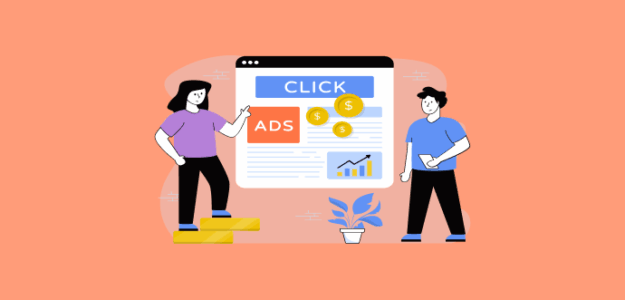Building organic traffic takes patience. Countless website owners struggle for months trying to rank in search results, only to watch their potential customers slip away because they simply can’t be found online. That’s where PPC marketing marketing changes everything.
Unlike SEO strategies that require months of waiting, PPC puts businesses right in front of people actively searching for what they offer. The best part? Advertisers only pay when someone actually clicks their ad.
Successful PPC campaigns follow proven patterns that separate profitable advertising from wasted budget. According to Google’s analysis of cost-per-click data from its advertisers, properly optimized PPC campaigns can deliver $2 in revenue for every $1 spent.
In this guide, I’ll walk you through everything you need to know about PPC marketing. Whether you’re launching a first campaign or looking to improve current results, these practical steps drive real business growth.
In This Article
- Understanding the Basics of PPC Marketing
- How PPC Marketing Actually Works
- Essential PPC Components
- Track PPC Results for Maximum ROI
- Where to Run Your PPC Marketing Campaigns
- Launching Your First PPC Ad Campaign
- Types of PPC Ads
- Measuring and Improving PPC Ad Performance
- Common PPC Mistakes to Avoid
- Getting Started with PPC Marketing
- FAQs: PPC Advertising
Understanding the Basics of PPC Marketing
Pay-per-click (PPC) advertising is straightforward. You create ads, choose where they appear, and pay each time someone clicks them.
Instead of hoping people find your website organically, you’re buying direct visits from people already interested in what you offer.
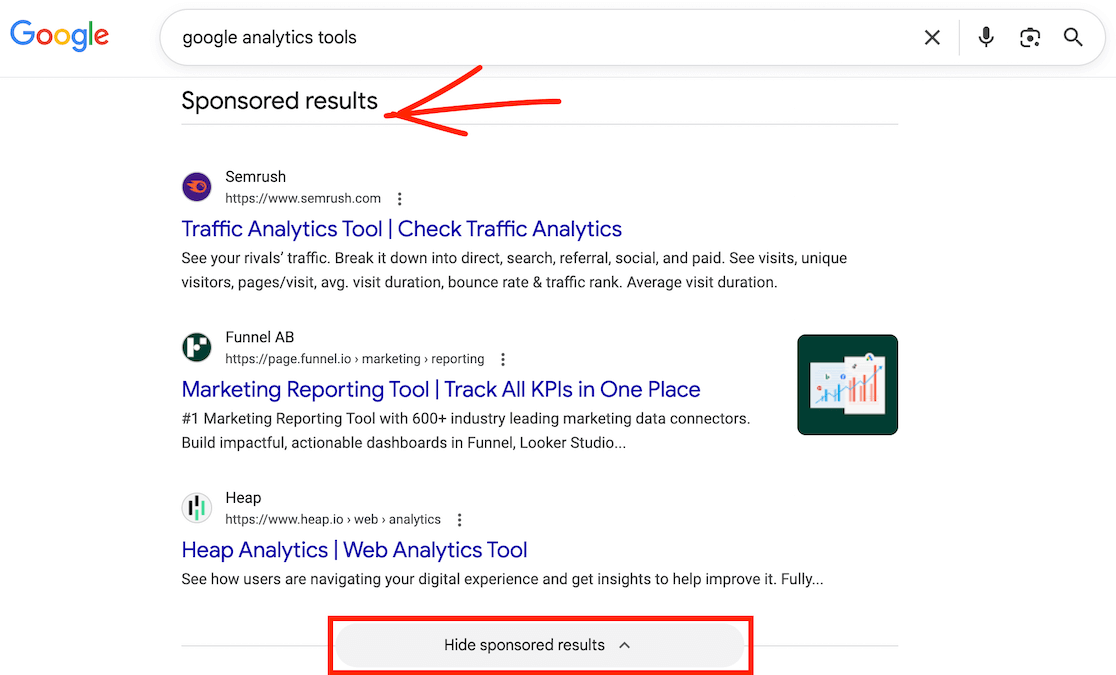
Here’s what makes PPC marketing so valuable for businesses:
- Instant visibility: Your ads go live immediately and can appear on page one within hours
- Precise targeting: Show ads to specific audiences based on their location, interests, search behavior, and demographics
- Clear measurements: Track exactly how many people see your ads, click them, and take action on your website
- Complete budget control: Set daily spending limits and adjust them whenever needed
- Easy adjustments: Change your ads, targeting, or budget anytime based on what’s working
How PPC Marketing Actually Works
PPC marketing operates on an auction system. When someone searches on Google, an instant auction happens to determine which ads show up and where they appear.
The process looks like this:
- You choose keywords related to your business and decide how much you’ll pay per click
- Someone searches using those keywords, triggering the ad auction
- Google evaluates your bid amount, ad quality, and expected user experience
- Your ad appears (or doesn’t) based on how you score against competitors
The interesting part? A lower bid can still win if your ad quality is better. Google rewards relevant, helpful ads with better positions and lower costs. This means creating great ads matters just as much as your budget.
Essential PPC Components
Four core elements determine whether your PPC campaigns succeed or fail. Each one needs your attention to get strong returns on your ad spending.
Choosing the Right Keywords
Keywords connect what people search for with your ads. Pick the wrong ones, and you’ll either miss potential customers or waste money on clicks that don’t convert.
I recommend this approach:
- Focus on relevance over search volume – a smaller, targeted audience converts better than massive, unfocused traffic
- Match keywords to search intent – are they researching, comparing, or ready to buy?
- Include specific long-tail phrases that show strong purchase intent
- Add location-based terms if you serve specific areas
- Research what competitors target to find gaps and opportunities
Real world example: A law firm gets better results from “workplace injury lawyer Chicago” than just “injury lawyer” – even with lower search volume. Specificity brings qualified leads.
Writing Ad Copy That Converts
Your ad copy has seconds to grab attention and convince someone to click. It needs to stand out while following platform requirements and character limits.
Here’s what works:
- Put your target keyword in both the headline and description
- Highlight what makes you different – free shipping, 24/7 support, same-day service
- Create urgency with limited-time offers when appropriate
- Include a clear call-to-action telling people exactly what to do next
- Address specific customer pain points in your messaging
- Use numbers and stats when possible (“50% faster” or “Join 10,000+ customers”)
Google’s Responsive Search Ads let you provide multiple headlines and descriptions. The system then tests combinations to find what performs best. I suggest creating 8-10 headlines and 3-4 descriptions to give the algorithm enough options.
Pro Tip: Test different wording constantly. Changing “Get a Quote” to “See Your Price Now” can dramatically impact your click-through rates and conversions.
Creating Landing Pages That Convert
Your landing page makes or breaks your campaign. Even the best ads fail when they send people to poor pages.
Effective landing pages share these characteristics:
- Match exactly what the ad promises – if your ad mentions “free shipping,” that needs to be obvious on the landing page
- Load quickly on all devices – every second of delay cuts conversions by up to 7%, according to Google
- Feature one clear call-to-action that stands out visually
- Remove navigation links that could distract from your conversion goal
- Include trust signals like customer reviews, security badges, or guarantees
- Work perfectly on mobile, tablet, and desktop
Here’s a common mistake: sending PPC traffic to your homepage or general product pages. Instead, create dedicated landing pages for each campaign. This lets you speak directly to the specific intent behind each search.
Someone searching “ergonomic office chair for back pain” should land on a page specifically about back pain relief, with testimonials from users who found relief. If they land on a page with other ergonomic office accessories, they may become overwhelmed and less likely to purchase.
Bidding Strategies That Work
How you bid impacts both your visibility and budget efficiency. The right strategy can improve your performance dramatically.
You have two main options:
Manual Bidding
You set bids yourself, giving you complete control. This works well when starting out because you learn how much each click is worth to your business. You can adjust bids based on device type, location, time of day, or audience segments.
Automated Bidding
The PPC platform adjusts your bids using machine learning. Google offers several automated strategies:
- Target CPA: Sets bids to achieve your target cost per conversion
- Target ROAS: Adjusts bids to hit your target return on ad spend
- Maximize Conversions: Gets as many conversions as possible within your budget
- Maximize Clicks: Drives the most clicks within your budget
I typically recommend starting with manual bidding to gather data, then switching to automated strategies once you have 15-30 conversions per month. This gives the algorithm enough information to optimize effectively.
Pro Tip: When transitioning to automated bidding, set initial targets close to your current performance. Setting overly aggressive targets immediately can severely limit your traffic. Start conservative, then adjust as the system learns.
Track PPC Results for Maximum ROI
Tracking conversions separates successful campaigns from money pits. Without proper tracking, you’re flying blind – unable to see which ads actually drive business results.
If you run a WordPress website, ExactMetrics makes PPC tracking incredibly simple. It’s the most popular Google Analytics plugin for WordPress, and it eliminates the technical complexity of tracking setup.
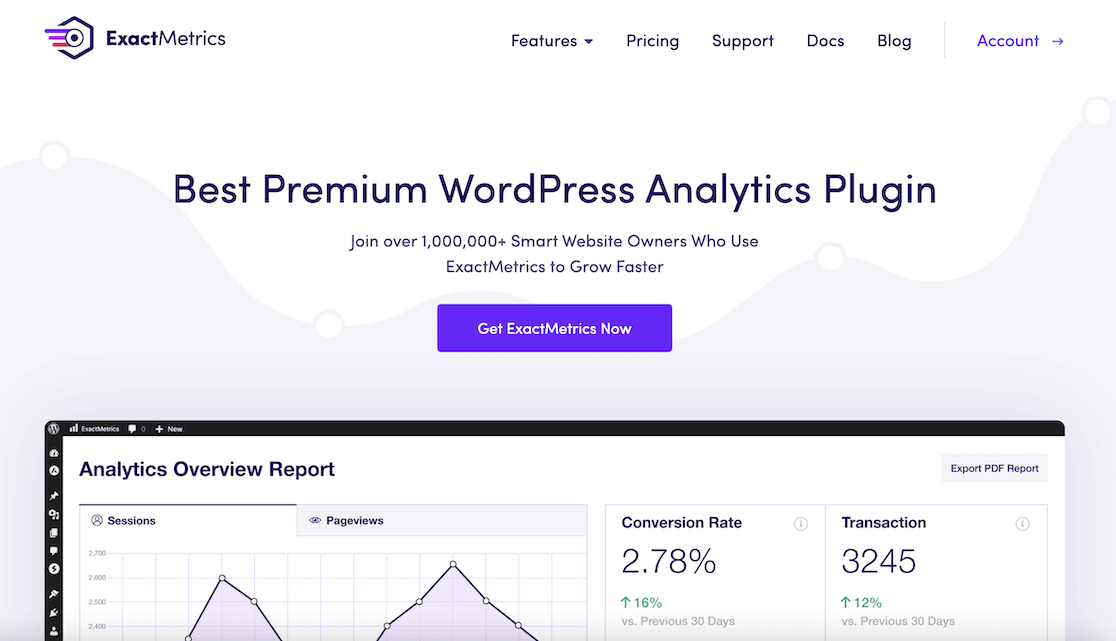
With ExactMetrics, you can:
- Connect Google Ads, Microsoft Advertising, and Meta Ads in minutes
- Track conversions without writing any code
- See which campaigns drive actual revenue for eCommerce sites
- View all your data in your WordPress dashboard
Setting up PPC tracking with ExactMetrics takes about 10 minutes. Just install the plugin, connect to Google Analytics, add the PPC Ads Tracking addon, and enter your advertising account IDs. Done. No Tag Manager required, no code needed.
Get started with ExactMetrics today!
Where to Run Your PPC Marketing Campaigns
Google Ads dominates PPC marketing, but several platforms offer valuable opportunities depending on your audience and goals.
Google Ads
Google processes over 8.5 billion searches daily, giving you unmatched reach. The platform offers search ads, display ads, shopping campaigns, and video ads on YouTube. Most businesses start here because of the massive audience and robust tools.
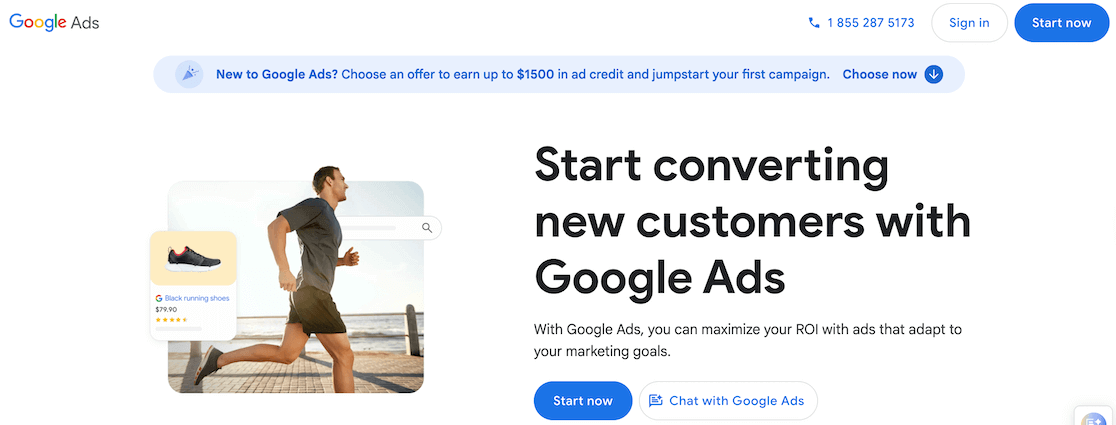
Google’s advanced targeting lets you reach people based on their search history, location, device, demographics, and interests. The reporting tools help you understand exactly what’s working.
Microsoft Advertising
Microsoft Advertising reaches Bing, Yahoo, and DuckDuckGo users. While smaller than Google, it offers less competition and often lower costs per click. Microsoft reports reaching 46 million searches that Google doesn’t capture.
I recommend running on Microsoft alongside Google. The setup is similar, and you can often import Google campaigns directly to Microsoft, saving time.
Social Media Platforms
Social platforms excel at targeting based on interests, behaviors, and demographics rather than search intent.
Facebook & Instagram
Meta’s platforms reach over 2.9 billion monthly active users. The detailed targeting options let you reach very specific audiences based on interests, behaviors, job titles, life events, and connections. Various ad formats include images, videos, carousels, and collection ads.
LinkedIn works great for B2B marketing, reaching 870+ million professionals. Target by job title, industry, company size, seniority, skills, and more. Costs per click run higher than other platforms, but lead quality for B2B often justifies the expense.
Choose platforms based on where your audience actually spends time, not where you think they should be.
Are you hoping to leverage social media as part of your PPC marketing strategy? With ExactMetrics, you can simplify Linked Ads Tracking, TikTok Ads tracking, and even Snapchat ads tracking.
Launching Your First PPC Ad Campaign
Ready to start? Here’s my step-by-step approach for launching your first PPC campaign successfully.
Select Your Platform
Pick one platform to start. For most businesses, Google Ads makes the most sense because of its reach and tools. Once you’re comfortable with one platform, expanding to others becomes easier.
Consider where your customers search, your budget, what you’re selling, and your comfort with advertising platforms.
Research Your Keywords
Identify keywords potential customers use when looking for your products or services. Start by brainstorming obvious terms, then use keyword research tools to expand your list and find search volumes.
Look at competitor keywords to see what’s working in your industry. Group similar keywords into themed ad groups. Mix commercial keywords (buying intent) with informational keywords (research intent) to capture different stages of the customer journey.
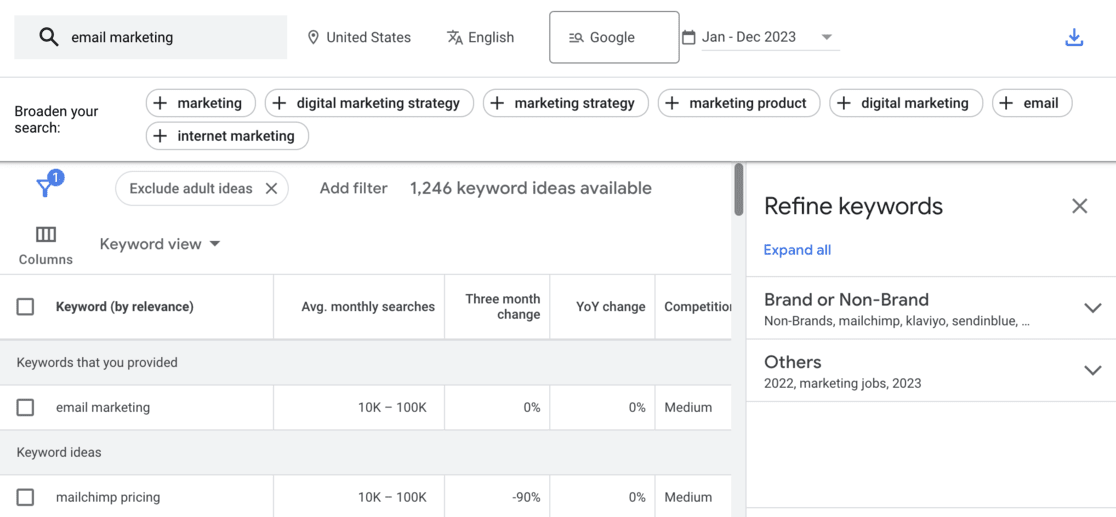
Use tools like Google Keyword Planner, Google Search Console, Semrush, or LowFruits to discover valuable keywords. But don’t stop there. Check your website analytics, read customer support questions, and browse industry forums to learn how real people talk about your products.
See our complete guide on how to use Google Search Console for keyword research for more information.
Write Your Ads
Create ads that connect with your target audience. Include your main keyword in the headline, highlight specific benefits rather than features, and add a strong call-to-action.
Use all available ad extensions to provide additional information and increase your ad’s visibility. Create at least 3-4 ad variations per ad group to test what resonates.
Example of a strong ad structure:
- Headline 1: Professional SEO Services
- Headline 2: Boost Rankings & Traffic Fast
- Description: Get customized SEO strategies that deliver results. Improve visibility and grow your business. Free consultation available!
- Call-to-action: Contact us for a free site audit
Set Your Budget
Start small and scale based on results. Determine your monthly budget, then allocate it across campaigns based on priority. Set daily budgets to control spending.
Calculate your target cost per acquisition based on customer value. If a customer is worth $500 to your business, you can afford to spend $100 per conversion and still maintain healthy margins.
Pro Tip: For your first campaign, set a budget you’re comfortable testing for 30 days minimum. This gives you enough data to make smart optimization decisions.
Types of PPC Ads
Different ad formats serve different purposes. Understanding each type helps you choose the right approach for your goals.
Search Ads

Text ads appearing on search results pages when people search for your keywords. These target users actively looking for solutions, making them highly effective for capturing existing demand. Search ads typically deliver the highest conversion rates.
Display Ads
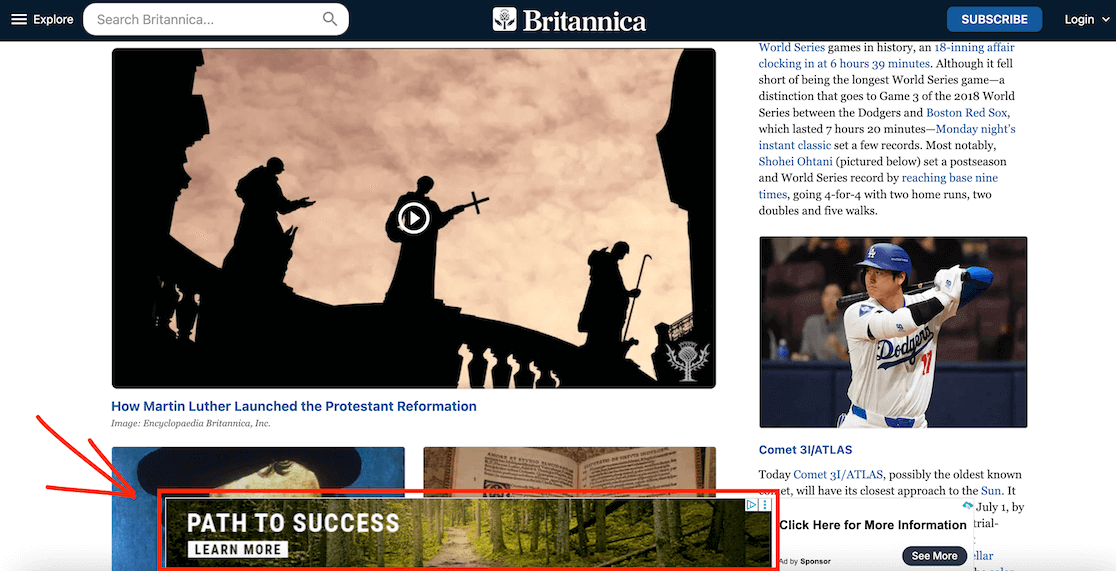
Visual banner ads shown across partner websites. Display ads work well for building brand awareness, remarketing to previous visitors, and reaching users early in their buying process.
Display ads typically have lower click-through rates than search ads but can be more affordable for generating impressions and staying top-of-mind with your audience.
Shopping Ads
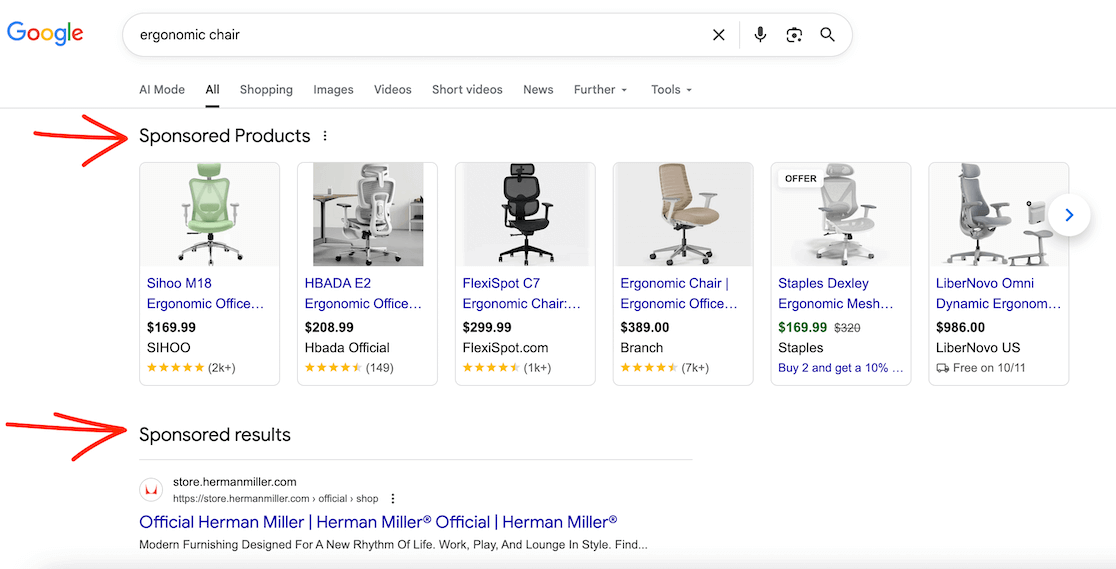
Product-focused ads showing images, prices, and store information directly in search results. Shopping ads are essential for eCommerce businesses. They provide visual product presentation and price transparency, which leads to higher-intent clicks.
If you run an online store, shopping ads should be part of your strategy from day one.
Video Ads
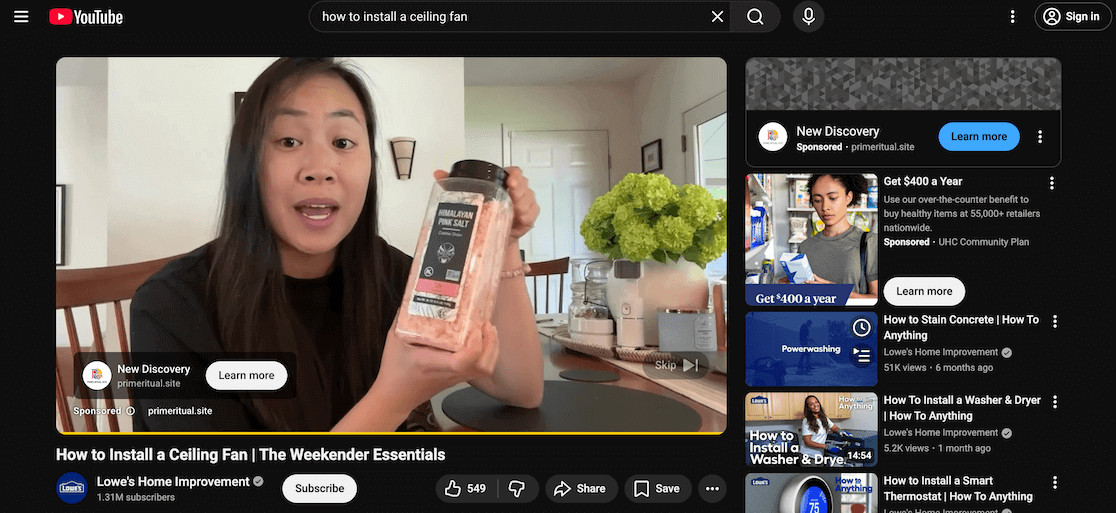
Ads appearing before, during, or after video content on platforms like YouTube. Video ads excel at demonstrating products in action, telling brand stories, and creating emotional connections with audiences.
According to Google research, viewers who watched a TrueView ad were 23 times more likely to visit or subscribe to a brand channel, share a brand video, or watch more content from that brand.
Measuring and Improving PPC Ad Performance
Getting strong returns from PPC marketing requires constant monitoring and optimization. Here’s what to track and how to improve your results.
Critical Metrics to Watch
- Click-Through Rate (CTR): Percentage of people who click after seeing your ad. High CTR indicates relevant, compelling ads.
- Cost Per Click (CPC): Average amount you pay for each click.
- Conversion Rate: Percentage of visitors who complete your desired action.
- Cost Per Conversion: Average spend to acquire one conversion.
- Quality Score: Google’s rating of your keywords and ads, affecting your ad rank and costs.
- Return on Ad Spend (ROAS): Revenue generated for every dollar spent on advertising.
Testing and Optimization
Regular testing identifies what works best. Test one element at a time – headline, description, call-to-action, or landing page. Run tests with enough traffic for statistical significance. Implement winning variations and continue testing new elements.
Other optimization strategies:
- Review search terms regularly to find queries triggering your ads, then adjust accordingly
- Refine keyword bids based on performance data
- Improve ad copy based on what resonates with your audience
- Enhance landing pages to increase conversion rates
- Schedule ads to show when your audience is most active
Common PPC Mistakes to Avoid
I’ve seen these mistakes drain budgets without delivering results. Here’s how to avoid them.
Targeting Too Broadly
Broad keywords like “shoes” or “insurance” cost more and bring unqualified traffic. Focus on specific, intent-driven keywords instead. Use long-tail phrases showing purchase intent. Target keywords directly related to what you offer.
Narrow targeting might seem limiting, but it brings better-qualified visitors who convert at higher rates.
Skipping Negative Keywords
Without negative keywords, your ads show for irrelevant searches. Review search term reports weekly to find queries that waste budget. Add terms attracting the wrong audience as negative keywords. Organize them by theme for easier management.
For example, if you sell premium furniture, add “cheap,” “free,” and “used” as negative keywords to avoid bargain hunters.
Ignoring Mobile Users
Over 60% of searches happen on mobile devices, according to Google. Create mobile-specific ads when appropriate. Ensure landing pages load fast and work perfectly on phones. Adjust bids for mobile if performance differs from desktop.
Mobile optimization isn’t optional anymore – it’s essential for PPC success.
Set-and-Forget Mentality
PPC campaigns need ongoing management. Schedule regular review sessions. Update ads based on performance data. Refresh ad copy to prevent fatigue. Test new keywords, audiences, and messaging.
Successful PPC advertisers check their campaigns at least weekly, adjusting based on what the data reveals.
Getting Started With PPC Marketing
PPC marketing offers immediate visibility and measurable results when done correctly. Start with one platform, focus on relevant keywords, create compelling ads, and track everything.
Remember these key points:
- Target specific keywords with clear purchase intent
- Write ads that speak directly to customer needs
- Create landing pages that match your ad promises
- Set up proper conversion tracking from day one
- Monitor performance and optimize continuously
- Start with a small budget and scale what works
For WordPress users, ExactMetrics makes tracking PPC conversions simple and accurate.
The plugin handles all the technical setup automatically, letting you focus on running profitable campaigns instead of wrestling with tracking code.
Ready to improve your PPC tracking? Get started with ExactMetrics today!
You might also find these guides helpful:
- Launch Google Ads Campaigns Directly from Your ExactMetrics Dashboard
- How to See Google Ads Reports (GA4 Tutorial)
- Pinterest Ads Tracking With ExactMetrics
And don’t forget to follow us on X and Facebook for our latest updates.
FAQs: PPC Advertising
Here are answers to common questions about PPC advertising.
What’s the difference between PPC marketing and SEO?
PPC marketing delivers immediate traffic by paying for ad placements, while SEO focuses on earning organic traffic through better search rankings. PPC offers instant visibility and precise targeting with direct costs per visitor. SEO provides sustainable traffic without per-click fees but requires more time to see results. Most businesses use both strategies together – PPC for immediate traffic and testing, SEO for long-term organic growth.
How much does PPC advertising cost?
PPC costs vary widely by industry and competition. Average cost per click ranges from $1-2 in some industries to $50+ in competitive sectors like insurance or legal services. Small businesses typically start with monthly budgets of $1,000-$5,000. Larger companies may spend tens of thousands monthly. You control maximum spend through daily budgets. The key metric isn’t cost per click, but cost per acquisition – what you pay to gain a new customer.
How long before I see PPC results?
Unlike SEO which takes months, PPC campaigns generate traffic within 24 hours of approval. However, achieving optimal performance usually takes 2-4 weeks as the system collects optimization data. New accounts experience a “learning period” where platforms gather performance data. For meaningful conversion data and ROI assessment, plan to run campaigns at least 30-60 days before making major strategy changes.
Is PPC worth it for small businesses?
PPC can be highly effective for small businesses when implemented strategically. Benefits include controlled spending with defined budgets, precise local targeting to reach nearby customers, and measurable ROI to track results. Small businesses should start with focused campaigns targeting their most profitable products or services, implement conversion tracking from day one, and consider professional management if they lack time or expertise. Even modest budgets can drive significant results targeting specific local searches with high purchase intent.
How do I calculate ROI for PPC campaigns?
Calculate PPC ROI using this formula: ROI = (Revenue – Cost) ÷ Cost × 100%. Track total conversion value (revenue from PPC traffic) through your analytics platform. Calculate total PPC costs including ad spend and any management fees. Subtract costs from revenue, divide by costs, then multiply by 100 for percentage ROI. For example, if you spent $1,000 on PPC and generated $4,000 in revenue, your ROI is 300%: ($4,000 – $1,000) ÷ $1,000 × 100% = 300%.
What’s the difference between manual and automated bidding?
Manual bidding gives you direct control over keyword bids, allowing precise adjustments based on your business knowledge. Automated bidding uses machine learning to set bids based on conversion likelihood, optimizing toward goals like target CPA or target ROAS. Manual bidding works best for small accounts or when you have specific bid strategies. Automated bidding generally performs better at scale when you have sufficient conversion data (typically 30+ conversions in 30 days) for algorithms to optimize effectively.
Does PPC help with SEO?
PPC doesn’t directly impact SEO rankings – paid advertising doesn’t influence organic search results. However, PPC supports SEO efforts indirectly. PPC data provides immediate keyword performance insights that inform SEO strategy. Running PPC while building SEO maintains visibility during the longer SEO development period. PPC can increase brand awareness, potentially boosting organic click-through rates when users recognize your brand in organic results. Many businesses find running both PPC and SEO creates synergy, with combined performance exceeding either channel alone.

